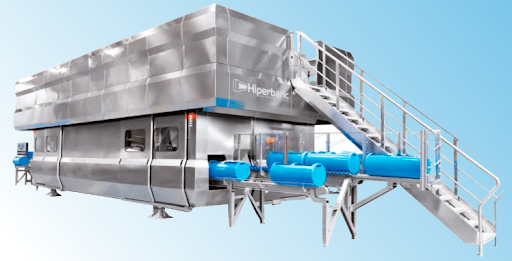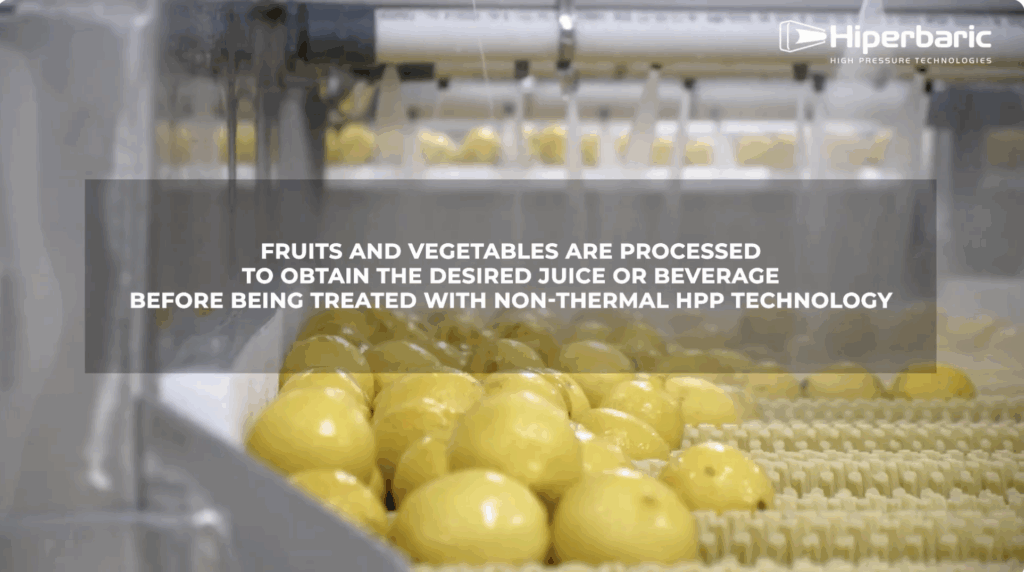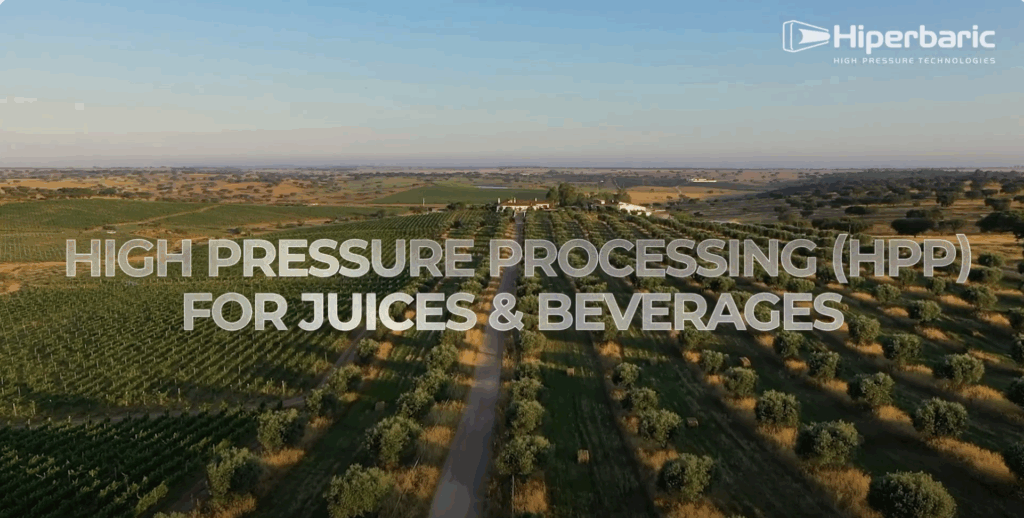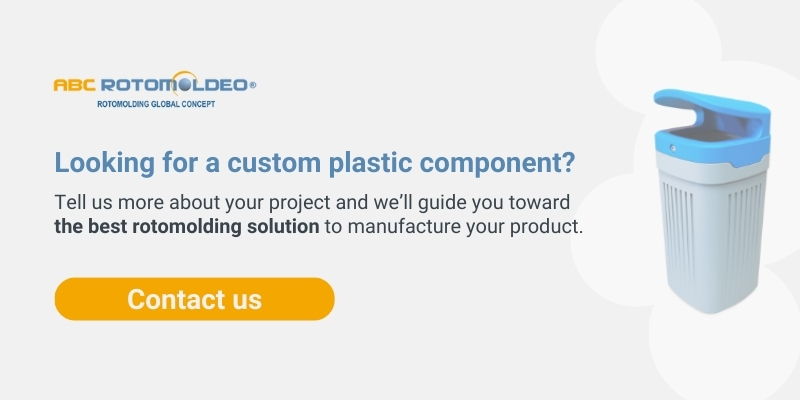
Rotomoulding is much more than a manufacturing process. It is a versatile technology capable of transforming industries as diverse as automotive, construction, healthcare and food production.
Its flexibility makes it possible to create durable, customised components, even in short production runs, positioning it as a competitive and adaptable alternative to other industrial methods.
A clear example comes from the food industry with Hiperbaric, the global leader in High Pressure Technology equipment. The company decided to design rotomoulded containers in different sizes as a key component of its food processing machines, gaining technical and usability advantages that have made a significant difference.
Below, we share the full interview with Hiperbaric, where they explain how this collaboration began and the results achieved.
About Hiperbaric
Hiperbaric is the world’s leading company in industrial High Pressure Technology equipment, with more than 60% of the global market share.
Since 1999, the company has consolidated its position as an international benchmark in the design, manufacture and marketing of high pressure processing (HPP) industrial machinery, with systems installed across five continents.
High Pressure Processing (HPP), also known as cold pasteurisation, is a method of preserving food and beverages at temperatures between 5ºC and 20ºC. Unlike traditional thermal processes, HPP extends shelf life without altering flavour, texture or nutritional properties. At the same time, it guarantees maximum food safety, a key factor for brands seeking quality and trust in every production batch.
Thanks to its commitment to rotomoulding, Hiperbaric has optimised the design of critical components in its equipment, improving not only technical performance but also the operator’s user experience.
This collaboration shows how rotomoulding can become a strategic ally for innovation in highly demanding sectors such as food processing.
Initial needs
Q. What challenge or requirement led Hiperbaric to explore rotomoulding solutions?
A. Food and beverages must be placed inside the high-pressure equipment for treatment. To enable this, containers are designed to ensure efficient loading, processing and unloading.
The wide range of container options required (different diameters for various machine models, lengths, automated solutions, etc.) means we need around 30 different moulds. For that reason, rotomoulding is the most viable technology.
Q. How did this challenge affect your design or production processes?
A. The productivity of our machines depends directly on the volume of product that can be loaded into the containers, so optimising them is critical.
Solution
Q. Why did you choose our company as your rotomoulding supplier for this project?
A. We initially worked with a large company in the sector, but our type of product, with relatively small batches and many different references, meant this supplier was neither agile enough nor willing to adapt to our needs. At ABC Rotomoldeo, we found a supplier aligned with our requirements.
Project development
Q. What was the manufacturing process like, from the initial requirement to final delivery?
A. In fact, the process is still ongoing, as we continue developing new designs and sizes. The first contact was very positive, as ABC Rotomoldeo offered their know-how and guidance for developing new moulds and rotomoulded parts. From the outset, the ABC team understood the challenges perfectly, particularly the need for container strength, and provided advice on the most suitable materials and moulds.
Q. Were there any difficulties during the process, and how were they resolved?
A. The main challenges came from the plastic manufacturing technology itself, as we were used to tolerances of tenths of a millimetre in almost every steel part. These tolerances were successfully narrowed down during production.
Q. What was the process of manufacturing your requirement through rotomoulding: from first contact to final delivery?
A. In fact, this process is ongoing, since we continue working on new designs and sizes. The first contact was very positive, as ABC Rotomoldeo provided us with their know-how and advice for the development of new moulds and rotomoulded components.
Q. Were there any difficulties during the process and how were they solved?
A. The main challenges arose from the plastic manufacturing technology itself, since we were used to tolerances of tenths of a millimetre in practically every steel component. The manufacturing tolerances were significantly reduced and successfully adjusted.
Results and benefits
Q. What were the main results after implementing rotomoulded components?
A. We can now offer our customers a wide variety of products with reasonable lead times and prices that meet their needs. In many cases, we can even deliver customised solutions.
Q. Could you share specific data or metrics (e.g. cost reduction, delivery times, quality improvements, efficiency gains)?
A. Although we do not have comparative figures, current lead times have allowed us to reduce stock significantly, resulting in considerable storage space savings.
Q. How has rotomoulding impacted your products?
A. The container is virtually the only component that operators handle directly. Its appearance, functionality and ease of use make it a key factor in the perception of quality that our customers associate with our machines.
Q. Any additional insights to explain why rotomoulding is the most suitable technique for these products?
A. Our approach is to provide customers with the most suitable solutions, which in some cases requires developing entirely new containers. Using another technology, such as injection moulding, this type of tailored service would be completely unfeasible due to the high cost of moulds, their long manufacturing times, and the low production volumes involved.
You may also be interested in: Rotomoulding vs injection moulding

Added value and experience
Q. What added value has ABC Rotomoldeo brought to the Hiperbaric project?
A. The main contribution has been their ability to adapt to the constant new requirements of our customers.
Manufacturing rotomoulded components for high pressure equipment
At ABC Rotomoldeo, we collaborate with industry leaders such as Hiperbaric, developing rotomoulded plastic components that deliver reliability, strength and designs adapted to the most demanding requirements.
From mould design to the choice of technical materials, geometries and finishes, we offer a comprehensive manufacturing service designed for high-performance industrial equipment, such as the systems Hiperbaric supplies across five continents.
Thanks to rotomoulding, it is possible to produce robust, lightweight and customised components, capable of withstanding intensive-use environments while improving operator experience. A tailor-made solution that combines personalised engineering with the versatility of rotomoulded plastic, ensuring optimal results in both durability and functionality.
If, like Hiperbaric, you are looking to integrate innovative components into your machines or equipment, ABC Rotomoldeo can help you make the leap to a technology that boosts competitiveness.


